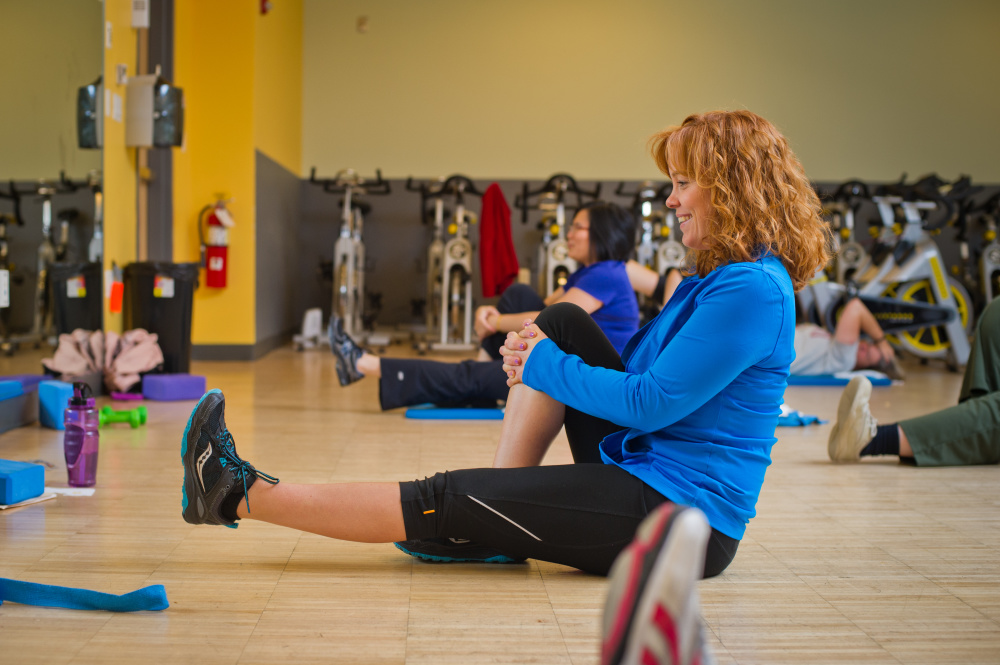Key Takeaway: Research shows that strength training, a type of exercise that can build muscle mass, can improve health in cancer patients.
Strength training is a type of exercise in which one uses resistance to force the muscles to contract to build strength. Resistance for strengthening can come from a person’s own body weight or from gym equipment.
We spoke to Nancy Campbell, MS, an exercise physiologist at Dana-Farber’s Leonard P. Zakim Center for Integrative Therapies, who offers exercise consults to cancer patients and survivors.
What are the benefits of strength training?
Campbell: Strength training can have many benefits for patients and non-patients, including:
- Increased muscle mass, which is often lost during treatment
- Maintain or increase bone density
- Increased metabolism
- Weight loss
- Weight gain from muscle mass
- Help countering diseases such as diabetes
- Lower blood pressure
- Help regulating insulin
- Normalized balance
- Improved posture
Are there trainers who specialize in strength training for cancer patients?

Campbell: Yes. The American College of Sports Medicine offers a cancer-specific certification for trainers, though the amount of certified trainers in the state is minimal at the moment. ACSM has recently revamped their guidelines on exercise and offers a list of resources for cancer patients.
Another great resource for training is Livestrong at the YMCA. Livestrong offers a training program for cancer patients and survivors, which takes place at YMCAs across the country. The trainers are knowledgeable on various cancers and exercises that will be most beneficial for different patients. Courses run twice a week for 12 weeks at no cost.
At Dana-Farber’s Zakim Center, patients and survivors can join exercise classes and programs, ask fitness-related questions, and get help with personalized exercise tips.
When is the best time to begin strength training?
Campbell: As soon as possible. It doesn’t take long to lose muscle mass, so starting training early on is best. It’s also a lot harder to regain muscle mass then it is to try not to lose it.
Research also shows a correlation between muscle mass and rates of survival.
How can I do strength training at home and what are some examples of strength training?
Campbell: There is always risk that comes with training, but if done correctly, injury can be avoided. Consulting with a physician is important in ensuring practicing safe exercise.
Strength training can be done with or without equipment. Wall sits, squats, and push-ups are good examples of strength training that can be practiced without equipment. These exercises can be modified slightly to fit the patient’s desired level of difficulty.
Using household objects such as soup cans, or purchasing equipment such as dumbbells, and exercising with these can help build strength, as well.
Is strength training or cardio better for your overall health?
Campbell: I’d say they are pretty equal. However, new findings are showing the significant benefits that come as a result from strength training.
It is important to recognize that various components of exercise are important: Getting heart rate up, practicing mindfulness, stretching, and building strength can all lead to improving one’s health.
About the Medical Reviewer
 Nancy Campbell is a Clinical Exercise Physiologist in the Zakim Center, is a Certified ACE Personal Trainer, and has the American College of Sports Medicine Cancer Exercise Trainer certification. She provides personalized exercise consultations for patients. Nancy also teaches several strength training-based exercise classes for patients and survivors.
Nancy Campbell is a Clinical Exercise Physiologist in the Zakim Center, is a Certified ACE Personal Trainer, and has the American College of Sports Medicine Cancer Exercise Trainer certification. She provides personalized exercise consultations for patients. Nancy also teaches several strength training-based exercise classes for patients and survivors.
Comments are closed.